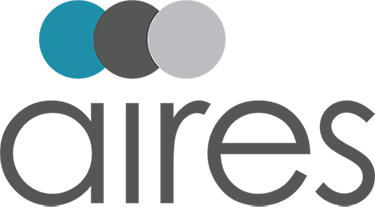Effective October 8, 2020, impactful rule changes have been published by the Department of Labor (DOL) and Department of Homeland Security (DHS) that will have major and immediate financial impacts on U.S. employers and also make the process of obtaining H-1B visas more difficult. It is important that employers understand these critical rule changes and strategize a plan for mitigating any disruptions to their immigration program and employees.
This blog post will assess the changes to both the DOL and DHS rules independently. Before doing so, it is important to note that these rule changes were implemented as Interim Final Rulings. This is important because it means that the normal rulemaking process was not followed due to some exceptional reason or cause. In this instance, the respective agencies point to the urgent need to respond to the economic crisis caused by COVID-19 and an effort to curb unemployment for American workers. This will undoubtedly be the basis of future legislation, but in the meantime, what should be immediately realized is that these rules will be streamlined and not follow the usual federal rulemaking process. In fact, the DOL rule has already gone into effect as of October 8, 2020 and the DHS rule will go into effect on December 7, 2020.
DEPARTMENT OF LABOR RULING
The important element of the DOL rule (“Strengthening Wage Protections for the Temporary and Permanent Employment of Certain Aliens in the United States”) revolves around prevailing wages that are utilized in processing H-1B and PERM labor certification applications. At each wage level increment, which is applied based on skills and experience, there exist major salary increases. The chart below assesses these percentage changes in the respective skill levels and is published by the Foreign Labor Certification Data Center On-Line Wage Library (OWL).
|
Skill Level |
Previous % |
New % |
|
I (Entry) |
17 |
45 |
|
II (Qualified) |
34 |
62 |
|
III (Experienced) |
50 |
78 |
|
IV (Fully Competent) |
67 |
95 |
These increases will be felt by employers in the issuance of Prevailing Wage Determinations by the Department of Labor during the PERM labor certification process and also during the certification process of Labor Condition Applications in congruence with H-1B petitions. For instance, utilizing wage data published by the Department of Labor, an entry level employee in a particular job classification will need to be paid 28% more than they previously were paid. To illuminate this by way of example, this would mark an increase in salary from $100,000 per year to $128,000 per year as a result of the new prevailing wage rules.
For PERM labor certifications and related Prevailing Wage Determinations, any request that is currently pending and has not been determined as of October 8 will fall under the new wage levels. For H-1B petitions and their related Labor Condition Application (LCA) certifications, the new wage levels will only apply to LCAs submitted on or after October 8.
DEPARTMENT OF HOMELAND SECURITY RULING
Moving along to the new DHS rule, “Strengthening the H-1B Nonimmigrant Visa Classification Program,” we note that this rule also follows the process of an Interim Final Rule, but will not actually go into effect until December 7, 2020. The main takeaways for this rule change are centered around heightened requirements regarding the definition of “specialty” occupation and on compliance surrounding H-1B holders working at third-party worksites.
Under previous regulations, the criteria were that an H-1B position must at least require a bachelor’s degree. This standard has increased and now the position be filled by an H-1B worker must be specifically related to a bachelor’s degree in a specific and related specialty. So, in essence, jobs that can be filled by educational experience relative to general degrees like business administration or liberal arts will not likely meet the threshold of a specialty job per the new rules. And despite still allowing one of multiple degrees to be utilized for a particular position, all the degrees listed must be specific.
With regard to third-party placement, employers will need to provide additional evidence to prove that an employer-employee relationship exists with employees working at offsite locations. Additionally, H-1B visas granted in this context will only be available for one year.
CONCLUSION
Due to the significant impact these new rules will have on employers sponsoring H-1B and PERM labor certifications – two very common and mainstream immigration actions in the United States mobility function – it is imperative that stakeholders communicate these changes to affected individuals in their organization. Should you require the assistance of the Aires Immigration department to review these changes or to help with communication protocols, please contact your Aires’ representative.
It is also worthwhile to point out that these dramatic changes, which are not unprecedented in global immigration, are easier to navigate with well-managed and organized immigration data for your quick reference and review. Doing so will ensure that you can efficiently and quickly pinpoint H-1B beneficiaries that may be impacted by wage levels and/or specialized degree requirements and communicate these issues in a strategic, forward-thinking manner.



